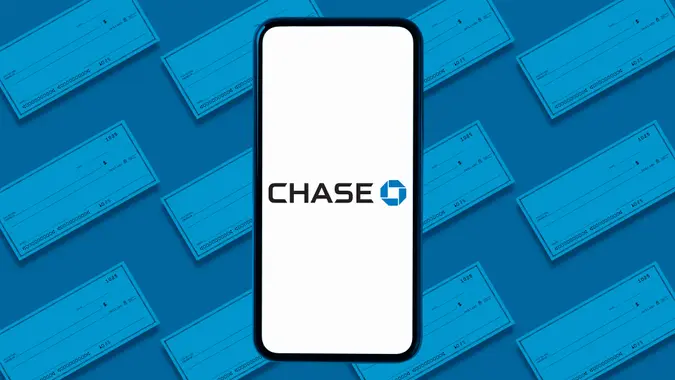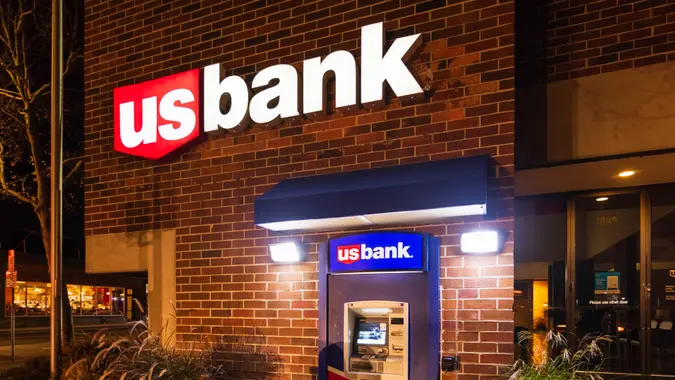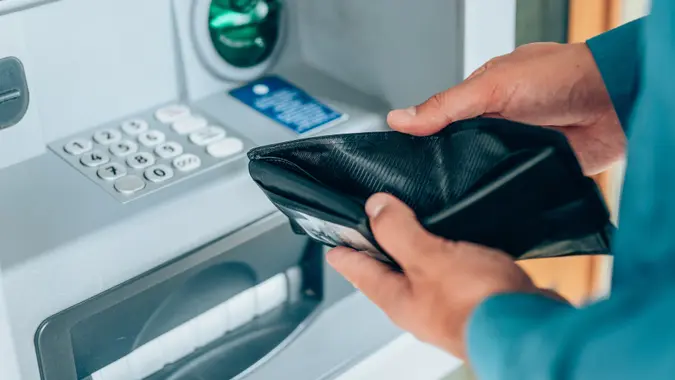Routing Number vs. Account Number: What’s the Difference?

Commitment to Our Readers
GOBankingRates' editorial team is committed to bringing you unbiased reviews and information. We use data-driven methodologies to evaluate financial products and services - our reviews and ratings are not influenced by advertisers. You can read more about our editorial guidelines and our products and services review methodology.

20 Years
Helping You Live Richer

Reviewed
by Experts

Trusted by
Millions of Readers
When managing your bank accounts or conducting financial transactions, you may encounter scenarios where it’s important to understand the differences.
Both of these numbers play important roles in handling your banking transactions, and each of its functions are unique. Keep reading to learn the differences between a routing number vs. account number and find out why you may need one instead of the other.
Routing Number vs. Account Number: What’s the Difference?
A routing number and account number are both necessary to identify the bank and your personal account. Here’s a breakdown of each:
What Is a Routing Number?
A routing number is a nine-digit code used by financial institutions to identify themselves. It’s a bit like a postal code for the bank, allowing other banks and financial entities to locate where your bank is situated.
Routing numbers are used for numerous financial transactions, including setting up direct deposits, processing checks and conducting wire transfers. Each bank has its own unique routing number, or sometimes several, depending on its size and the types of transactions it handles.
What Is an Account Number?
Your account number, on the other hand, is a unique identifier for your personal account within your bank. Typically a longer series of digits than the routing number, this number ensures that money coming into or going out of your account reaches the right destination.
Your account number is necessary for individual transactions like receiving deposits, transferring money out of your account or for setting up automated bill payments from your account.
Where To Find Your Routing Number and Account Number
It’s fairly easy to locate your routing and account number on a check or bank statement.
Finding the Routing Number and Account Number on a Check
The first nine digits at the bottom of your check is the routing number. Some checks may list the routing number toward the top, but that isn’t always the case. The second set of numbers is the account number.
How To Find Your Account Number Using Your Bank’s Online Portal
Follow the steps below:
- Once you log in to your bank’s website, navigate toward the section labeled, “Account Overview,” “Accounts” or “Account Summary.”
- Select the specific account you want to access and within the account details, look for a section labeled “Account Information,” “Details” or “Statements.”
- From there, you should be able to see your account number, routing number and account balance.
- Also, you can download a statement from your online bank portal to locate your account number.
How Do Routing and Account Numbers Work?
Routing numbers and account numbers usually work together. When transactions are processed, the routing number identifies the specific financial institution, while the personal account number directs the funds to the correct account within that bank.
Here are transactions that require both routing and account numbers:
- Direct deposits: For payroll, government benefits or tax refunds, both numbers will be required.
- Bill payments: If you set up recurring payments for any services like utilities, cable TV, etc., you will need both a routing and account number.
- Wire transfers: Both numbers are essential for sending and receiving large amounts of funds domestically or internationally.
- Electronic transfers: Electronic transfers are also known as ACH transfers, and a routing and account number are required to transfer funds between accounts or to an external account like Venmo and PayPal.
- Loan or mortgage payments: When a lender debits your account automatically for your monthly payment, they will need both a routing and account number.
- Tax payments or refunds: To receive funds or make payments, the IRS needs both numbers.
What Happens if You Enter the Wrong Routing or Account Number?
It’s possible to make mistakes when you’re figuring out when to use the routing number vs. the account number. Here are some of the more common mistakes:
- Transposing digits. It’s easy to invert the order of the numbers.
- Using the wrong routing number: Sometimes, a bank undergoes a merger, and the routing number may change.
- Omitting digits: Leaving a single number out of the routing or account number is a common mistake.
- Including extra digits: Sometimes errors occur because you inadvertently added an extra digit to the routing or account number.
- Mistaking the account number for the routing number: If you’re unfamiliar with your account number, you may accidentally switch the two sets of numbers.
What Happens If You Use the Wrong Bank Information?
It doesn’t matter if either your account or routing number is incorrect–something could delay or prevent your transaction from completing.
These are some of the consequences:
- The transaction will fail to process, and likely, the funds won’t move out of your account.
- Funds may be sent to the wrong account. If the account number is wrong and belongs to someone else, your funds could be sent to that unintended account.
- If the numbers were accidentally switched, the transaction may be delayed, which can also delay receiving or sending funds.
- There’s a higher potential for fraud. The wrong recipient may access the funds if the incorrect routing and account number match an account.
How Do You Fix Errors and Prevent Delays?
- Act quickly. Inform your bank and the recipient of your error. Some transactions can be cancelled prior to processing.
- Provide the correct information as soon as possible. Once you realize the error, provide the right routing and account numbers.
- Double-check and verify all information. Before you start, double-check the details.
- Copy numbers from direct sources. Use routing numbers that appear on your checks, bank statements or from the online bank portal.
How Routing Numbers Differ Between Banks and Locations
Each bank typically has one routing number to identify it in the U.S. financial system. Larger banks may have multiple routing numbers for specific regions. For instance, a bank like Wells Fargo may have different routing numbers for Florida and Texas.
Some banks may have different routing numbers for specific transactions. Many banks have different routing numbers for wire transfers or international transactions. Finally, routing numbers can vary by region.
To find the right number, you can do the following:
- Find your routing number on a personal check.
- Use your bank’s online platform.
- Visit your bank’s website.
- Call customer service.
- Visit a branch.
- Look at your bank statement.
Can You Use a Routing Number Without an Account Number?
Typically most transactions require both numbers. A routing number can be used to identify a bank, but no payment or funds can be transferred unless you have access to the account number. You typically need both numbers for direct deposits, bill payments, wire transfers and ACH transfers.
The types of scenarios that require only a routing number are the following:
- Verifying legitimacy of a bank for payment platforms like PayPal, Venmo, etc.
- To identify a location of a specific bank
- Internal bank transfers
- An employer may request the routing number to set up direct deposit for an employee.
How to Keep Your Bank Numbers Safe
Your routing and account numbers are key to accessing your bank account, so it’s important to handle them with care. If this information falls into the wrong hands, it could be used for fraudulent withdrawals or unauthorized transfers.
Risks of sharing your bank numbersSharing your bank account and routing numbers can lead to identity theft and fraud. Scammers may use the information to create fake checks or attempt unauthorized transactions. Even sharing these numbers over unsecured Wi-Fi or in response to phishing emails can put your money at risk.
When it’s safe to shareIt’s generally safe to provide your bank numbers to trusted sources like your employer (for direct deposit), your mortgage company, or a verified government agency. Just make sure you’re sharing them through secure, encrypted channels–never over email or text.
Tips to protect your information
- Avoid writing your bank numbers down unless necessary.
- Share these numbers only when required.
- Don’t share your information over public Wi-Fi.
- Use alerts to notify you of any transactions that may be suspicious and monitor your bank account regularly for suspicious activity.
- Use your bank’s alerts to stay informed about transactions.
- Never respond to emails or calls asking for your bank details unless you’ve verified the source.
FAQ
Here are the answers to some of the most frequently asked questions about routing numbers vs. account numbers.- What is the difference between a routing number and an account number?
- A routing number identifies the bank, while the account number identifies your personal account.
- Can I use my routing number to make payments?
- No, you need both your routing number and account number to make a payment.
- How do I find my routing number if I don't have a check?
- You can visit the bank's website for the routing number or call customer service. You can also log in to your bank and access your account to locate your routing number.
- Is the routing number the same for every branch of my bank?
- No, sometimes the routing differs from branch-to-branch. Double check with the bank if you're uncertain of your routing number.
 Written by
Written by  Edited by
Edited by 























